Thanks to diverse and informative expert speakers and a highly engaged audience, the 2016 Citizens Summit, “Citizen Science: Translating Science Into Action For Long Island Sound,” was a huge success! The focus of this year—the 25th anniversary of the summit—was on the very citizens who are taking action to protect the Sound. We celebrated their efforts, discussed new innovative tools for understanding the Sound’s health, and dedicated an entire afternoon of workshops to citizen science monitoring, data analysis, and communicating science with clarity and impact.
The morning kicked off with a welcome address by the U.S. Environmental Protection Agency’s (EPA) Mark Tedesco, honoring legendary Soundkeeper Terry Backer. Our very own Curt Johnson recapped our progress in restoring Long Island Sound over the last 25 years.
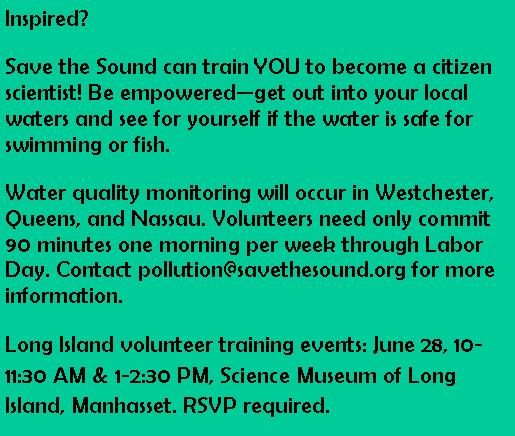 Dr. Anahita Williamson, EPA Region 2 Director, Division of Environmental Science and Assessment, shared why citizen science is so important to the EPA, what the agency is doing to support these groups, and how citizen groups can apply for monitoring equipment. She also shared an inspiring success story about how residents of Tonawanda, New York, used citizen science to prove their town was suffering from air pollution, and to advocate for cleaning it up. Dr. Williamson’s full presentation can be found here.
Dr. Anahita Williamson, EPA Region 2 Director, Division of Environmental Science and Assessment, shared why citizen science is so important to the EPA, what the agency is doing to support these groups, and how citizen groups can apply for monitoring equipment. She also shared an inspiring success story about how residents of Tonawanda, New York, used citizen science to prove their town was suffering from air pollution, and to advocate for cleaning it up. Dr. Williamson’s full presentation can be found here.
Tracy Brown, Director of Save the Sound’s Western Sound Program, discussed the Long Island Sound Report Card, a comprehensive look at key indicators of the Sound’s health, like oxygen levels, levels of nitrogen and phosphorus, and state of key species like piping plovers and eelgrass. The University of Maryland issued the first report card last year; Save the Sound will develop and issue it in coming years.
Tracy also highlighted the Sound Health Explorer, an in-depth tool and interactive website launched by Save the Sound last year that shows beach water quality in your neck of the woods. Data collected automatically updates into the grading system allowing local residents, citizen groups, and recreational boaters to see historical trends in levels of bacteria in their area, whether it’s been safe for swimming and fishing, and the conditions the samples were taken in. Together with layers showing land use, wastewater treatment sites, and watershed boundaries, this data can tell powerful stories about what’s happening in the Sound. You can see Tracy’s presentation here.
We were so grateful Associate Director of the Alan Alda Center for Communicating Science, Dr. Christine O’Connell, was able to spend the entire day with us. We’ve all been in the position where our science lingo completely railroaded our intended message and the audience lost the point. Dr. O’Connell shared ideas on connecting to your intended audience, simplifying your message without dumbing it down, being passionate and animated to get your audience excited, and most importantly, always having a goal in mind—what do you want your audience to know or do at the end of your presentation?
After we worked up an appetite from the morning session, Farm to Table Catering by Filomena served up lunch, offering high quality organic salads and sandwiches. This delicious, local, and sustainable caterer is located only minutes from Stony Brook University.
Our afternoon sessions were divided into two groups. Peter Linderoth presented on Save the Sound’s new Unified Water Study for Long Island Sound Embayments and discussed current Long Island Sound conditions, how monitoring groups can get involved, and how the data collected will be used to track and advocate for improved water quality conditions. Peter’s full presentation can be found here. At the same time Dr. O’Connell led an interactive workshop on better understanding your audience and how to engage them for a highly impactful message. Dr. O’Connell’s workshop encouraged the group to think outside the box when developing and presenting to an audience, and the tasks to develop those skills were a lot of fun! See more from the Alan Alda Center for Communicating Science here.
The second session of the afternoon offered an opportunity to hear from the following five citizen groups from around the Sound about their current projects.
- The Harborwatch Water Quality Monitoring Program of Earthplace
- Setauket Harbor Task Force
- Friends of the Bay
- Group for the East End
- Coastal Steward
A panel of experts then gave feedback on the message and provided concrete advice about how to improve their presentations, while the audience got to hear about exciting projects!
Lastly, Jim Ferretti and Stanley Stephansen from the EPA presented on parameters for water quality sample collection, design, and equipment requirements for citizen science groups—including how to build sampling equipment at home for just a few dollars! Jim’s presentation can be found here and Stan’s here. You can find out more, including how to borrow equipment and design a high-quality sampling program, at EPA’s citizen science website.
Nancy Seligson, Supervisor for the Town of Mamaroneck and New York co-chair for the Citizens Advisory Committee of the Long Island Sound Study, as usual gave a fantastic wrap up for the event with highlights from the day, her take on the importance of citizen science, and an inspiring vision for continued action to heal Long Island Sound together.

Our thanks to the following sponsors—and YOU—for a fantastic event!
Alan Alda Center for Communicating Science
School of Marine and Atmospheric Sciences
See you next year!

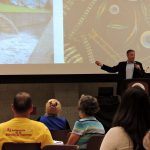
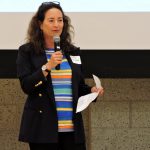
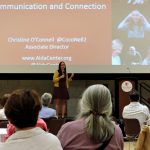
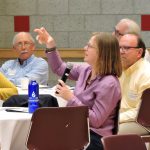
Is there anyone working on the Five Mile River area in Ct ?